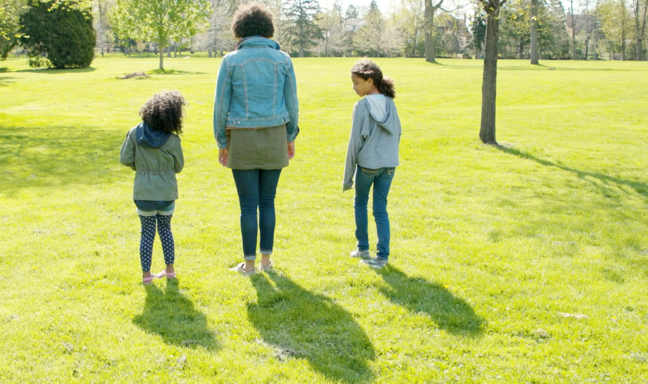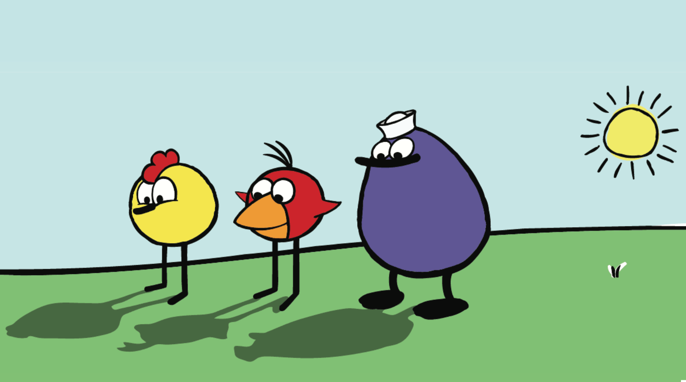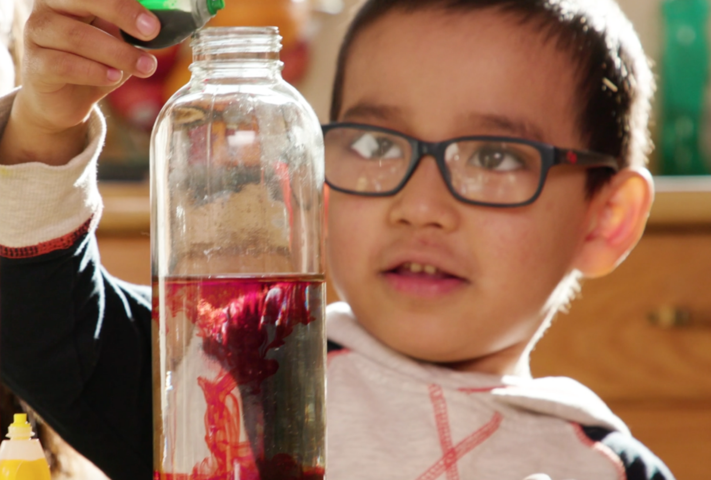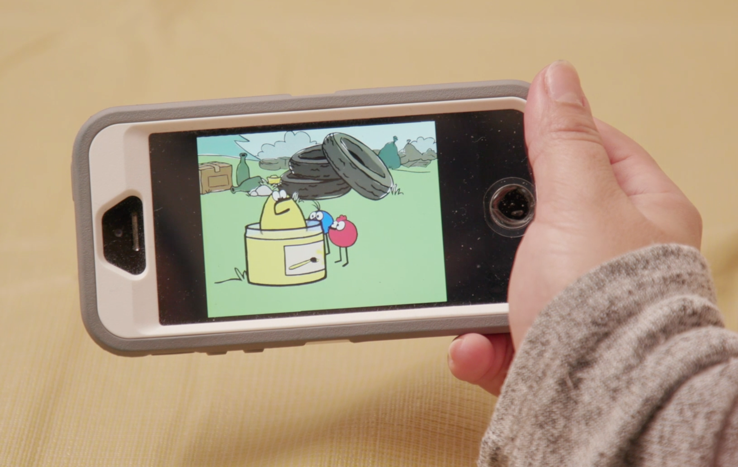Preschool Science at Home: The PEEP Family Science Apps
By Peggy Ashbrook
Posted on 2019-08-09
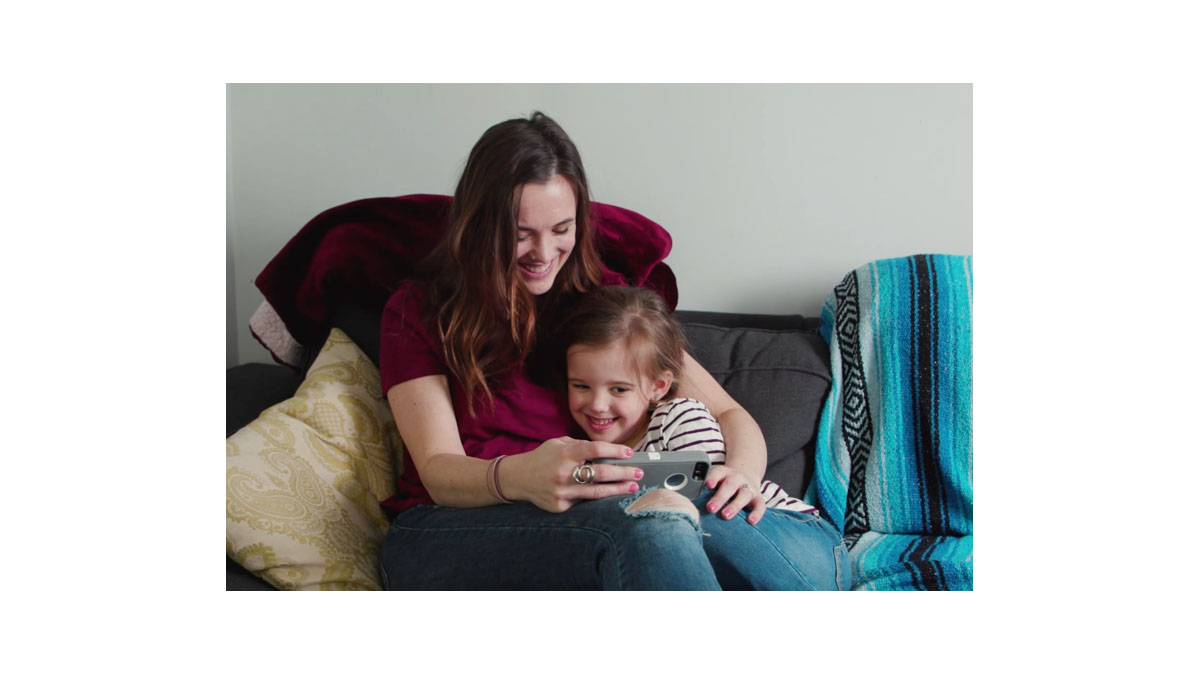
Guest blog post authors, Michelle Cerrone, Gay Mohrbacher, and Megan Silander write about using digital media to support children’s interest in science topics, and discuss tips educators can use to support families using media to explore science with their preschool-age children, based on their research and development of the PEEP Family Science series of apps.
Michelle Cerrone, is a Research Associate at the Education Development Center’s (EDC) Center for Children and Technology. Michelle’s work focuses on the role of media and ed tech in supporting STEM learning and teacher professional development. Gay Mohrbacher is a Senior Project Manager for WGBH Education. Gay coordinates educational outreach to early childhood audiences for PBS station, WGBH. WGBH is a national leader in producing media-based resources to support learning and teaching. Megan Silander is a Research Scientist at EDC’s Center for Children and Technology. Megan conducts research on the use of digital tools and media to increase capacity to support children’s learning, both in and out of school. Welcome Michelle, Gay, and Megan!

When used well, media (such as live-action videos, animations, and digital games) can inspire parents’ and children’s interest in science topics, engage their imaginations, model how to explore science, and show children things they cannot experience in person.
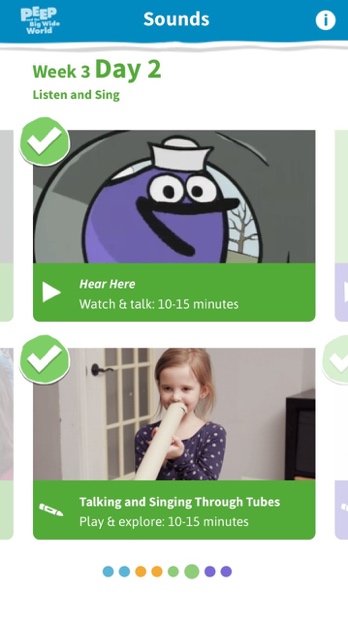
A high-quality media experience for preschoolers involves an adult and connects the media with hands-on investigation of topics children encounter in their everyday lives. When an adult shares the experience of watching a video or playing a digital game with a young child and then uses it as a springboard to real-life explorations, media-based resources can provide a terrific opportunity for learning (Strouse et al., 2013; Strouse et al., 2018).
Tips for Educators
Below we offer four tips for how educators can work with families to prepare them to use media to engage in hands-on science explorations. These tips are based on the authors’ research and testing of the PEEP Family Science app…more about this app later.
- Address parent perceptions that science is too difficult for preschoolers. Some parents view science as a technical subject far beyond their young child’s grasp, and many lack confidence in their ability to help their child learn science. To reassure parents that they already have the knowledge and tools necessary to explore science with their child, educators might recommend families view animated videos on PEEP Family Science featuring lovable characters engaged in science adventures involving water drops, sounds, or shadows. The videos can expand parents’ notion of science and demonstrate that science for preschoolers is fun, easy to do, and focuses on everyday topics and phenomena children are naturally curious about.
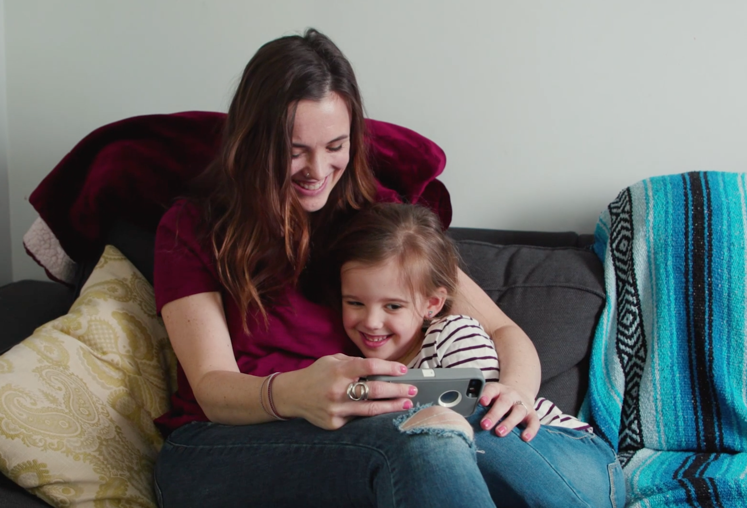
2. Help parents use media effectively. We know that how parents participate in their child’s media consumption is critical for supporting learning (Strouse et al., 2013; Strouse et al., 2018). Parents should be active participants: watching alongside their child, asking questions, helping them make sense of what they are seeing, and expressing excitement throughout the experience.
During home visits or school events, educators can model these practices for parents. The PEEP Family Science apps provide embedded reminders prompting this kind of interaction.
3. Provide scaffolds and simple strategies. Educators can boost parent confidence by modeling science activities, demonstrating how to facilitate a child-centered activity, and offering ways to encourage children to talk and reflect on their science experiences. Parents can benefit from simple strategies on how to keep children engaged in science explorations. The PEEP Family Science apps feature parent videos that model the science activities and offer parent strategies such as play and explore together, ask questions and talk about ideas, and explore more.
4. Direct parents to high-quality resources. Not all media are created equally and parents may need guidance choosing from a seemingly endless menu of options. Direct parents to media that supports active learning through hands-on, child-centered explorations, and that help parents consider ways to explore a given topic in new ways, indoors and out. For example, PEEP Family Science uses an animation about PEEP and his friends going down a slide as a jumping-off point for hands-on activities exploring ideas such as ramps and friction. The PEEP apps also offer ideas for how parents can extend a hands-on activity to other settings or using other materials.
More about PEEP
PEEP Family Science was created by educational media developers from WGBH (Boston’s PBS station) and tested by researchers from Education Development Center’s Center for Children and Technology. Designed to help families with preschool-age children engage in science at home, PEEP pairs media with hands-on activities and comes in a series of apps, each on a different science topic: sounds, ramps and movement, colors, and shadows. Awarded a 5-star rating from Common Sense Media (see, for example, reviews of PEEP Colors and PEEP Ramps), the apps are free, easy to download and use offline, and come in English and Spanish.
Each 20- to 30-minute session uses a PEEP video to introduce a new concept, offers step-by-step ideas for the parent and child to explore together, provides questions to launch a conversation, and suggests ideas for taking an exploration further. In addition to the apps, there are print and video resources for educators—the impact of PEEP Family Science is greatly enhanced when families have the support of someone who can get them started and check back later as they continue to explore at home.
The PEEP Study: Addressing a Need
With funding from the National Science Foundation, we tested PEEP Family Science with low-income families who participate in home visiting programs that support parents whose children are not enrolled in formal preschool. The study responded to the urgent, ongoing need to find new avenues for bringing early science experiences to all children. For many, preschool provides opportunities to engage in meaningful science learning. But for the 46% of American 3- and 4-year-olds who do not attend preschool, opportunities for science enrichment are limited and depend greatly on grownups in the home. As noted, many parents may feel ill-equipped and hesitant to pursue science-related activities with their children, or they may not know where to turn for quality, age-appropriate supports. The result is that many children who would benefit from early science enrichment are not getting those experiences. Home visiting programs, which have trained early childhood specialists who go into families’ homes to give parents the resources they need to foster children’s healthy development and school readiness, are one promising avenue for reaching parents unable to send their children to preschool.
A team of researchers at EDC studied the implementation of PEEP Family Science with English- and Spanish-speaking families enrolled in home visiting programs in both rural and urban communities. The research team tested PEEP Family Science with 217 families and 20 home educators from local offices of home visiting organizations: HIPPY USA (in Arkansas) and AVANCE (in Texas). More than three-quarters of households served by home visiting services report annual family incomes below the federal poverty guidelines. One-third of parents are under 21 years old, and a little under one-third do not have a high school diploma.
Findings
The use of media and characters as role models is an important strength of PEEP. During interviews, parents reported that their children watched the videos multiple times, identified with the characters, and were motivated to explore the same content PEEP characters explored. Parents also reported doing substantially more science activities with their children and using more engagement strategies to support their children’s learning. During observations, parents and children used science practices, including asking questions; planning and carrying out investigations; analyzing and interpreting data; and evaluating and sharing information. Moreover, the vast majority of parents agreed that PEEP Family Science gave them ideas about how to do science activities beyond the activities in the app.
PEEP Family Science is available for free in both English and Spanish on both Google Play and the App Store. There are four different apps: sounds, ramps, colors, and shadows. Find out more about EDC’s study, Bringing Science Home with PEEP.
References
Strouse, G. A., O’Doherty, K., & Troseth, G. L. (2013). Effective coviewing: Preschoolers’ learning from video after a dialogic questioning intervention. Developmental psychology, 49(12), 2368.
Strouse, G. A., Troseth, G. L., O’Doherty, K. D., & Saylor, M. M. (2018). Co-viewing supports toddlers’ word learning from contingent and noncontingent video. Journal of experimental child psychology, 166, 310-326.
Disclaimer: The views expressed in this blog post are those of the author(s) and do not necessarily reflect the official position of the National Science Teaching Association (NSTA).



